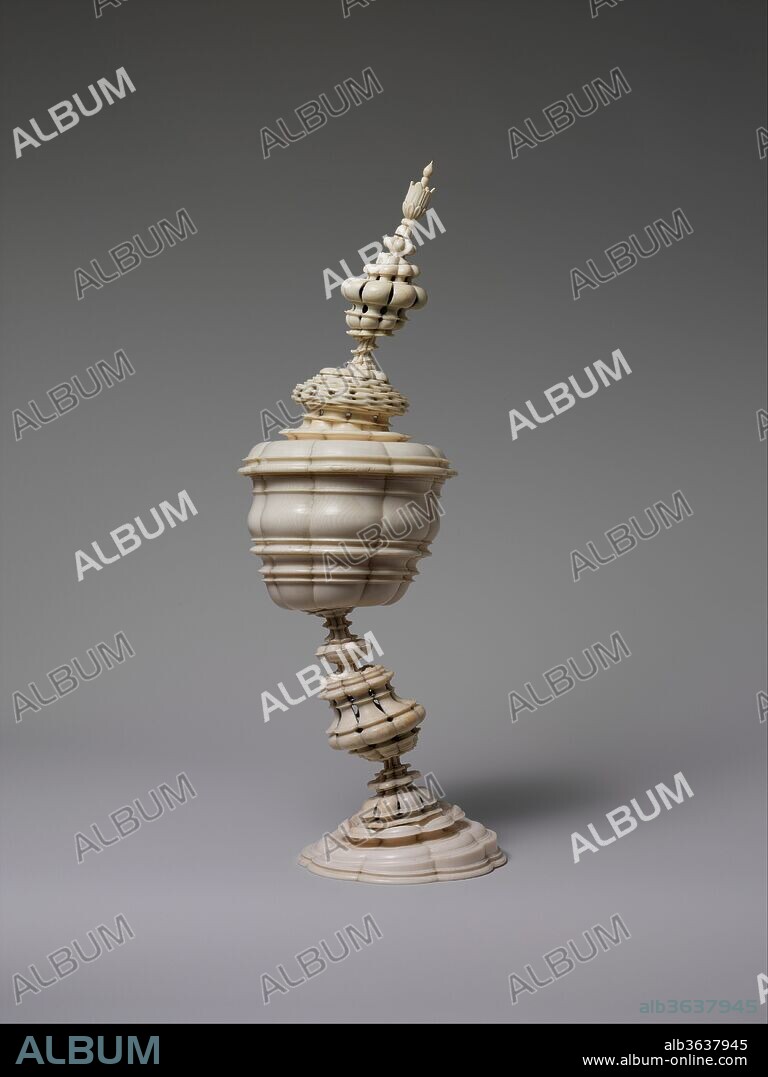alb3637945
Standing cup

|
Add to another lightbox |
|
Add to another lightbox |



Buy this image.
Select the use:

Title:
Standing cup
Caption:
Standing cup. Culture: German, Nuremberg. Dimensions: Overall: 14 × 5 × 4 1/4 in. (35.6 × 12.7 × 10.8 cm). Maker: Possibly by workshop of Lorenz Zick (1594-1666); Possibly by workshop of Stephen Zick (died 1715). Date: 17th century.
The technique of forming objects on a lathe, or turning, reached a high degree of complexity in the Renaissance and Baroque eras, when French, Italian, and Central European workshops produced paper-thin hollowed-out shapes from single blocks of ivory. Clerics and noblemen embraced turning as a hobby. Among the rulers who collected masterpieces of turning for their Kunstkammern and practiced the art themselves were the Holy Roman Emperors Maximilian II (r. 1564-76), Rudolf II (r. 1576-1612), and Ferdinand III (r. 1619-37). The eccentric form of this cup exemplifies Mannerist taste in Central Europe, though the most challenging aspect of its creation was concocting the lacy hollows that form the stem and spire.
Technique/material:
IVORY
Museum:
Metropolitan Museum of Art, New York, USA
Maker:
Possibly by workshop of Lorenz Zick (1594-1666) • Possibly by workshop of Stephen Zick (died 1715)
Credit:
Album
Releases:
Image size:
3170 x 4226 px | 38.3 MB
Print size:
26.8 x 35.8 cm | 10.6 x 14.1 in (300 dpi)
Keywords:
ANATOMY: BONES • BAVARIA • BONE • CUPS • DRINKING VESSELS • EUROPE • EUROPEAN SCULPTURE AND DECORATIVE ARTS • GERMANY • IVORY • METROPOLITAN MUSEUM OF ART, NEW YORK, USA • NATURAL SUBSTANCES-IVORY • NUREMBERG • POSSIBLY BY WORKSHOP OF LORENZ ZICK (1594-1666) • POSSIBLY BY WORKSHOP OF STEPHEN ZICK (DIED 1715) • STANDING CUPS


 Pinterest
Pinterest Twitter
Twitter Facebook
Facebook Copy link
Copy link Email
Email
